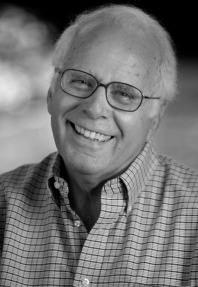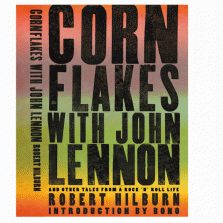KANYE WEST’S “MY BEAUTIFUL DARK TWISTED FANTASY” (Roc-A-Fella)
√ Bob Recommended
When I first interviewed West shortly after the release of “The College Dropout” in 2004, he spoke about his music and career goals with a passion and ambition that reminded me of my early meetings with Bruce Springsteen and Bono. After listening to so many young artists who weren’t aiming for anything more than a hit record, it was inspiring to hear these young men in their 20s talk about higher creative dreams. As West showed in such tracks as the landmark “Jesus Walks” on that first album, he wanted, first of all, to show you can still connect with a contemporary hip-hop audience by speaking about life and community in the tradition of Curtis Mayfield and other R&B commentators from the 1960s and 1970s. But he also wanted to elevate—or, some might say, liberate—rap by expanding its sonic barriers to include anything that entered his imagination, be it a string section or prog-rock. The following year, West made the album, “Late Registration,” that lived up to both goals and established him as one of the most important figures ever in hip-hop. How could you not believe in someone who could make a track as entertaining as “Gold Digger” and then strike back with “Crack Music,” a statement of inner-city despair as powerful as anything James Brown or Marvin Gaye ever delivered? While West aimed for new heights on his next two albums, neither achieved the growth that the first two promised, “Fantasy” is the one that most fully achieves the growth of tnot only recaptures the early brilliance, but it also extends it. The raps are smart, provocative, funny and revealing—touching on matters as diverse as his own celebrity, the complexity of relationships and the nation’s cultural values and division. Employing, seemingly, a cast of thousands (including musicians, rappers and producers), several tasty samples (Mike Oldfield to Gil Scot-Heron) and stylish musical touches (electro-rock to old-school funk); he delivers an album filled with both sweeping grandeur and deep-rooted intimacy. It’s complex, yet remarkably accessible. A modern classic.
JOHN LENNON AND YOKO ONO’S “DOUBLE FANTASY/STRIPPED DOWN” (Capitol)
√ Bob Recommended
When "Double Fantasy" won a Grammy for album of the year following John’s death a quarter century ago, some privately felt that the vote was largely in tribute rather than an endorsement of the album itself. Now that time has passed, it may be easier to look at the actual merits of the work—and this package gives us two ways to examine the music. First, there is the original album, which contained such sweet, wistful tracks as “(Just Like) Starting Over” and “Watching the Wheels,” and it’s a warm, disarming work. It contains a charm and honesty that is so powerful in places that it may bring a tear to Lennon fans’ eyes. Secondly, there is a “stripped down” version which is even more powerful in many ways. In remixing the original album, Yoko and producer Jack Douglas eliminated much of the musical embroidery of "Double Fantasy," thus placing greater emphasis on John’s vocals. This gives the album a more immediate and urgent tone. To some extent, Yoko and Douglas have done the reverse of what John once did himself. After his brilliant, but stark “Plastic Ono Band” didn’t become as big a hit as he had hoped, John returned to the studio with new songs that reflected many of the same themes. This time he added some musical embroidery—“chocolate” he called it—to make the subsequent album more accessible. And, sure enough, the “Imagine” album was a commercial smash. In stripping away the embroidery of "Double Fantasy," Yoko and Douglas take away some of the accessibility of the album, but the added emotional force will be treasured by John and Yoko fans.
KINGS OF LEON’S “COME AROUND SUNDOWN” (RCA)
Outstanding band comes up short
This band is one of the decade’s best rock arrivals—one that reflects much of the ambition, passion and craft of the great groups from earlier decades. One shared element between the Kings and their predecessors is wanting to make substantial music and reach a mass audience. Caleb Followill’s voice captures the yearning, questioning and optimism of youth in a way that transcends eras, and the guitar touches highlight consistently tasty, alluring arrangements. That said, the Tennessee-based quartet’s latest album too often feels scattered and uncertain. The earnestness and ambition is still there, especially in “Back Down South,” “Birthday” and the boozy “Mi Amigo.” Yet too many songs seem a step slow—emotionally—in ways that suggest the U2-influenced outfit never quite found just whatthey were looking for in the studio.
BOOKS
BOB WOODWARD’S “OBAMA’S WARS”
√ Bob Recommended
From “All the President’s Men” to “Bush at War,” Woodward has chronicled the frustratingly complex and often wildly clumsy ways of Washington with a tenacity that has earned him remarkable access to the men and women who wield the power. His books have been uneven—sometimes truly revealing, other times merely detailed. Here, he lets us sit in on the give-and-take between the President, his aides and the country’s military leaders as Obama tries to figure out the course he wants to take in Afghanistan and Pakistan. At times, the principals go over the same issues so many times that you feel he’s accidently repeated a section. But that’s the nature of the process. The unnerving thing is that after all the meetings and the final decision, there’s still a sense that no one is quite sure of whether the path is correct. Insightful book.
MOVIES
“THE NEXT THREE DAYS”
Not what we or Russell Crowe needed
After that stinker “Robin Hood,” Crowe needed something truly substantial to begin winning back the confidence of movie fans and he turned to a gifted writer-director in Paul Haggis (“Crash” and “Million Dollar Baby”) for help, but Haggis doesn’t deliver for him. The movie is dreadfully slow in places and ludicrous in others—two qualities that you want to avoid at all costs if you are trying to make a tense, psychologically-driven jailbreak movie. At the core of the story, Crowe’s world is torn apart when his wife, Elizabeth Banks, is arrested for a murder she may or may not have committed. After exhausting all legal means trying to free her, he decides to try to break her out of jail. The idea is so goofy that audiences will surely sympathize with the startled Banks when she asks, in effect, after learning of his plan, if he’s lost his mind.


 RSS Feed
RSS Feed


